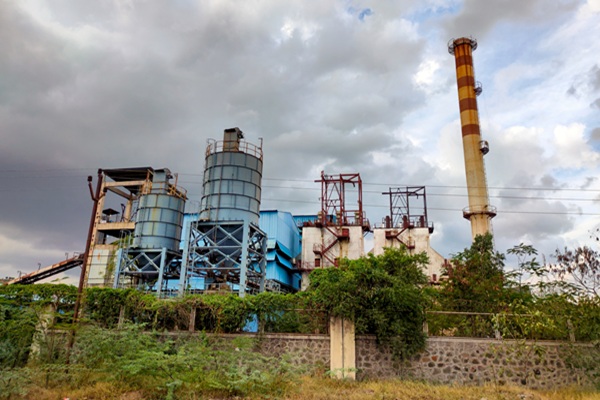.png)

Ishtiyaque Ahmed, an IRS officer, heads the Industry and Foreign Investment Division at NITI Aayog shaping policies on foreign investment, GVCs, PLI rollout and manufacturing sector.
July 21, 2025 at 2:45 AM IST
India has made no secret of its manufacturing ambitions. Sectors like electronics and automobiles are getting policy push and investment interest in equal measure. But there’s another industry, far more underleveraged, that could play an outsized role in India’s journey to becoming an advanced economy: chemicals.
With a market worth $220 billion, the chemicals industry is one of the country’s largest. It feeds everything from agriculture to textiles, and pharmaceuticals to automobiles. Yet, despite its size and reach, India’s position in the global chemicals trade remains modest.
India currently accounts for just 3-3.5% of global chemical consumption. Our participation in chemical global value chains, is largely limited to bulk commodity chemicals. Take propylene, for instance: 95% of India’s output is used to make polypropylene, mostly for packaging and textiles. Globally, that number is closer to 70%. With ethylene, it’s a similar story: 75% of our production goes into polyethylene, versus 63% worldwide.
Rather than climbing the value chain, we are circling the bottom of it. The consequences are predictable: we miss out on high-value trade, advanced technology transfers, and the kind of skilled employment the sector is capable of generating.
India is the world’s sixth-largest chemical producer and the third-largest in Asia, but we are still a marginal player when it comes to global supply chains. If we want a larger share of global trade, we need to stop being content with scale alone.
Visible Roadblocks
Feedstock availability is a chronic issue, especially for high-value petrochemicals and specialty chemicals, where imports still dominate. Infrastructure, too, is patchy. Our ports lack dedicated chemical berths, tank storage is limited, and last-mile logistics remain inefficient. Even the flagship Petroleum, Chemicals and Petrochemical Investment Regions are a mixed bag: Dahej in Gujarat has taken off, but others in Odisha, Andhra Pradesh, and Tamil Nadu are struggling to get basic utilities and investors in place.
Delays in regulatory approvals and slow-paced implementation of projects deter the investor. Meanwhile, the sector suffers from underinvestment in R&D. Indian chemical firms typically spend just 0.7% of revenue on R&D, barely a third of the global average of 2.3%. Unsurprisingly, we lag behind in innovation, patents, and advanced process technologies.
Then there is the skills deficit. The industry faces a 30% shortage in trained personnel, particularly in fast-growing areas like green chemistry, nanotechnology, and polymer science.
All this results in a cost disadvantage that Indian manufacturers struggle to overcome.
Unlocking Opportunity
The next five years offer a rare window to shift this trajectory. With global supply chains being rethought, India has a chance to move into more valuable segments of the chemicals trade.
NITI Aayog’s recent proposals outline a sensible roadmap: raising India’s share in global chemical GVCs to 5-6% by 2030, and up to 10-12% by 2040. That would mean a stronger export position, a net-zero trade balance, and up to a million new jobs.
We need to finish what the PCPIRs started. Build fully-integrated chemical hubs with plug-and-play infrastructure, shared utilities, and streamlined governance. Focus on regions with natural advantages, especially coastal states like Gujarat, Maharashtra, Andhra Pradesh, and Tamil Nadu, where port access is already strong.
India is not yet cost-competitive in many high-priority categories such as battery chemicals, dyes and pigments, or agrochemical intermediates. Time-bound operational expenditure support could help level the playing field, at least until logistics and infrastructure catch up.
On the technology front, we need a central interface between industry and the government to identify priority research areas, fund collaborative R&D, and track success through patents and commercial applications. Tie-ups with global firms can help bridge the gap in the interim, but long-term, we will need our own IP.
Environmental clearances should be faster, clearer, and more predictable. These should be fast-tracked with provisions for deemed approvals and commencement of partial construction activities while awaiting full clearance.
Trade policy needs guarding too. FTAs should come with safeguards—tariff quotas on essential inputs, and some protection for high-value finished goods—to avoid domestic players being undercut.
And none of this will stick without talent. We need new curricula, upgraded ITIs, and faculty trained in the technologies that will define the future of this sector.
Revitalising the chemicals industry isn’t just about exports or GDP numbers. It’s about what kind of economy India wants to be. Do we want to remain a supplier of basic inputs or become a serious player in high-value global industries?
The chemicals sector touches every part of the economy and has the potential to generate exactly the kind of formal, high-skilled jobs India desperately needs. But for that to happen, we must treat it as strategic, not just industrial.
If we get it right, chemicals could be one of the cornerstones of Viksit Bharat—a high-tech, globally integrated economy, not just a large one.
But if we continue playing at the margins, we’ll be leaving billions on the table.




